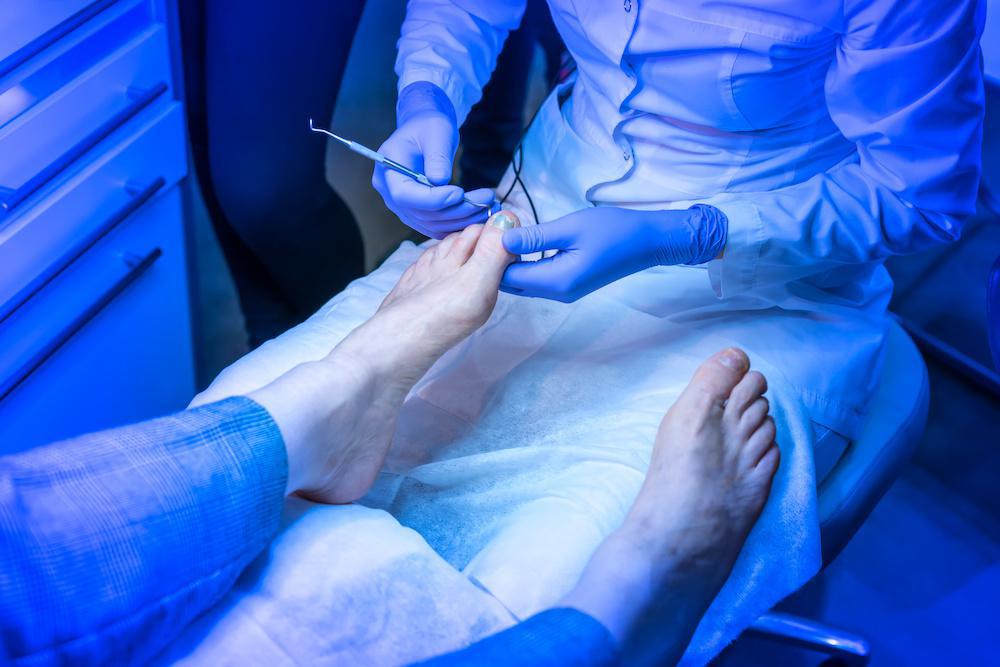Toenails naturally grow on the surface of your skin. But clipping a toenail too short or accidentally stubbing your toe can force the nail into the skin along the side of it. When a nail grows into the surrounding tissue, an ingrown toenail develops.
Anyone can get an ingrown toenail, and they occur most frequently with the big toes. Some people have naturally thick or curved toenails that continually grow into the tissue around the nail, causing frequent ingrown toenail pain.
Ingrown toenails can be uncomfortable, and severe cases can lead to infection if left untreated. In this blog, David B. Glover, DPM, FACFAS, at Mountain View Foot & Ankle Institute discusses when you can treat an ingrown toenail at home and when you should seek professional help.
Caring for ingrown toenails
If you notice mild redness or pain near the edge of a toenail, at-home treatment may be enough to prevent infection and damage. Soaking your feet in warm water for about 20 minutes a few times a day can limit swelling and pain, but be sure to thoroughly dry your feet each time.
Applying an antibiotic ointment to the toe and bandaging it can help prevent infection and speed healing. Consider wearing open-toed shoes or going barefoot until the toenail grows out and it’s no longer painful.
As your toe heals, keep an eye out for signs of infection. Don’t try to trim the toenail yourself unless you can clearly see the edge of your nail. If you notice pus, intense pain, heat, or swelling, you may have an ingrown toenail infection that requires medical care.
What to do about an ingrown toenail infection
Infections are a common complication of severely ingrown toenails. Ingrown toenail infections often appear as very swollen, tender, and warm areas near the toenail. Visible pus is another sign of an infection.
When your ingrown toenail is infected, you shouldn’t try to treat it at home. Infections require professional care to prevent the infection from spreading and other complications.
If Dr. Glover diagnoses an infection, he may prescribe an antibiotic medication. He generally removes the part of the toenail that’s embedded and dresses the area. If your toenail is affected by a nail fungus, he can treat that with the HyperBlue® Plus laser system.
Foot infections are particularly dangerous for people with diabetes. If you have diabetes and you notice an ingrown toenail, open wound, or infection, make an appointment with Dr. Glover right away. Our team offers comprehensive diabetic foot care to reduce your risk of complications and keep your feet healthy.
Preventing ingrown toenails
The way you trim your nails and the type of shoes you wear can help prevent ingrown toenails from developing. Always trim your toenails straight across instead of curved, and keep them at a moderate length. Cutting nails too short can encourage ingrowth, while nails that are too long can break and cause damage.
Furthermore, wear shoes that give your toes plenty of space to move, and avoid extremely tight socks. Shoes and socks that are too tight can squeeze toes and force toenails into surrounding tissue over time.
But even with proper foot care, some people are prone to frequent ingrown toenails. If your lifestyle or genetic factors cause recurrent ingrown toenails, Dr. Glover may recommend a simple surgical procedure to remove part or all of your toenail.
Removing the portion of the toenail that is ingrown is an in-office procedure performed under local anesthesia. Dr. Glover trims away the nail at the nail bed and treats the area with a laser or chemical to prevent future growth.
This procedure is safe and effective at eliminating bothersome and painful ingrown toenails. If you think you might benefit from podiatric treatment for recurring ingrown toenails, talk to Dr. Glover about your options.
Find relief from uncomfortable ingrown toenails at Mountain View Foot & Ankle Institute. Schedule an appointment with Dr. Glover online or call our office at 801-614-2996.

